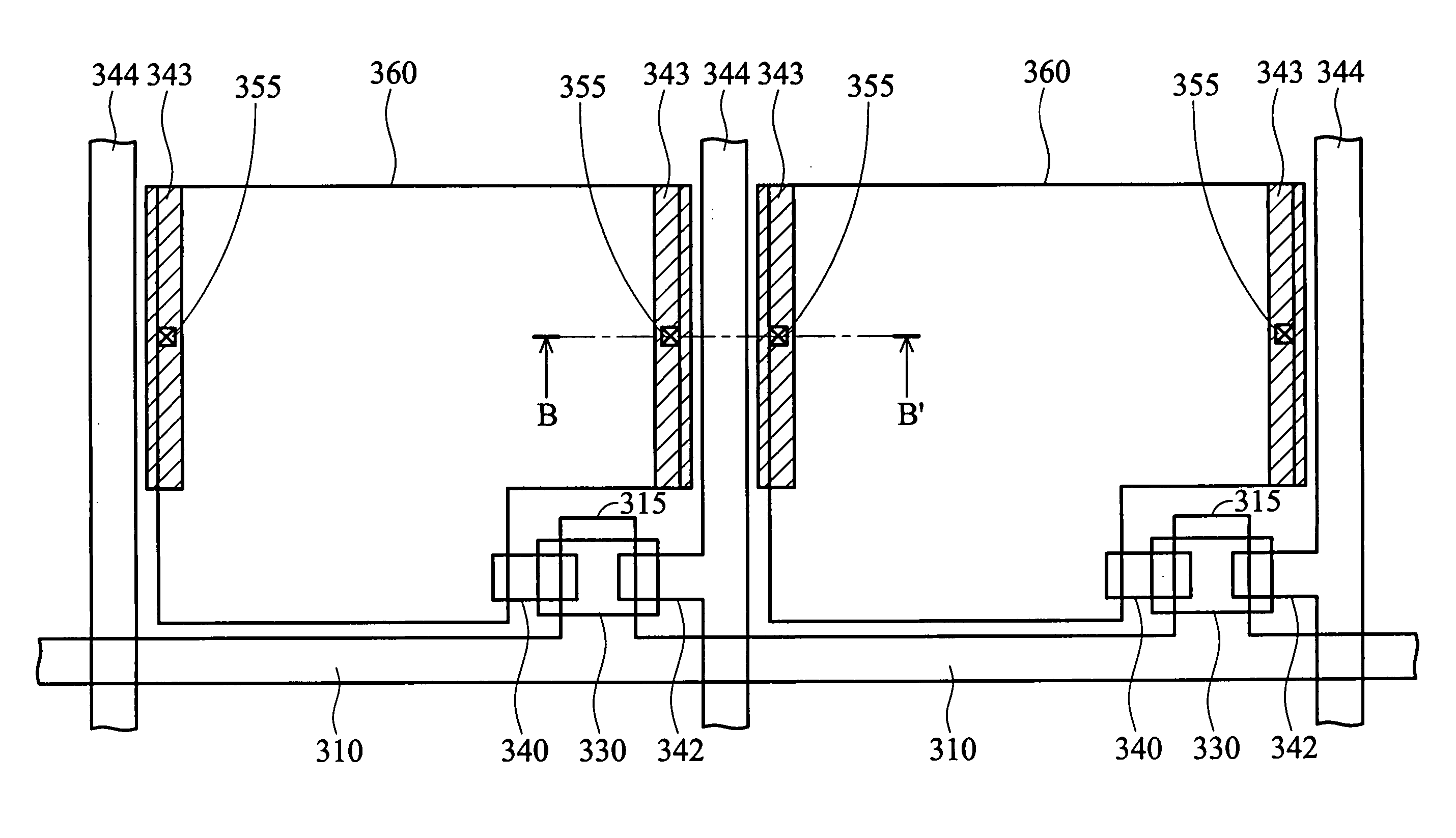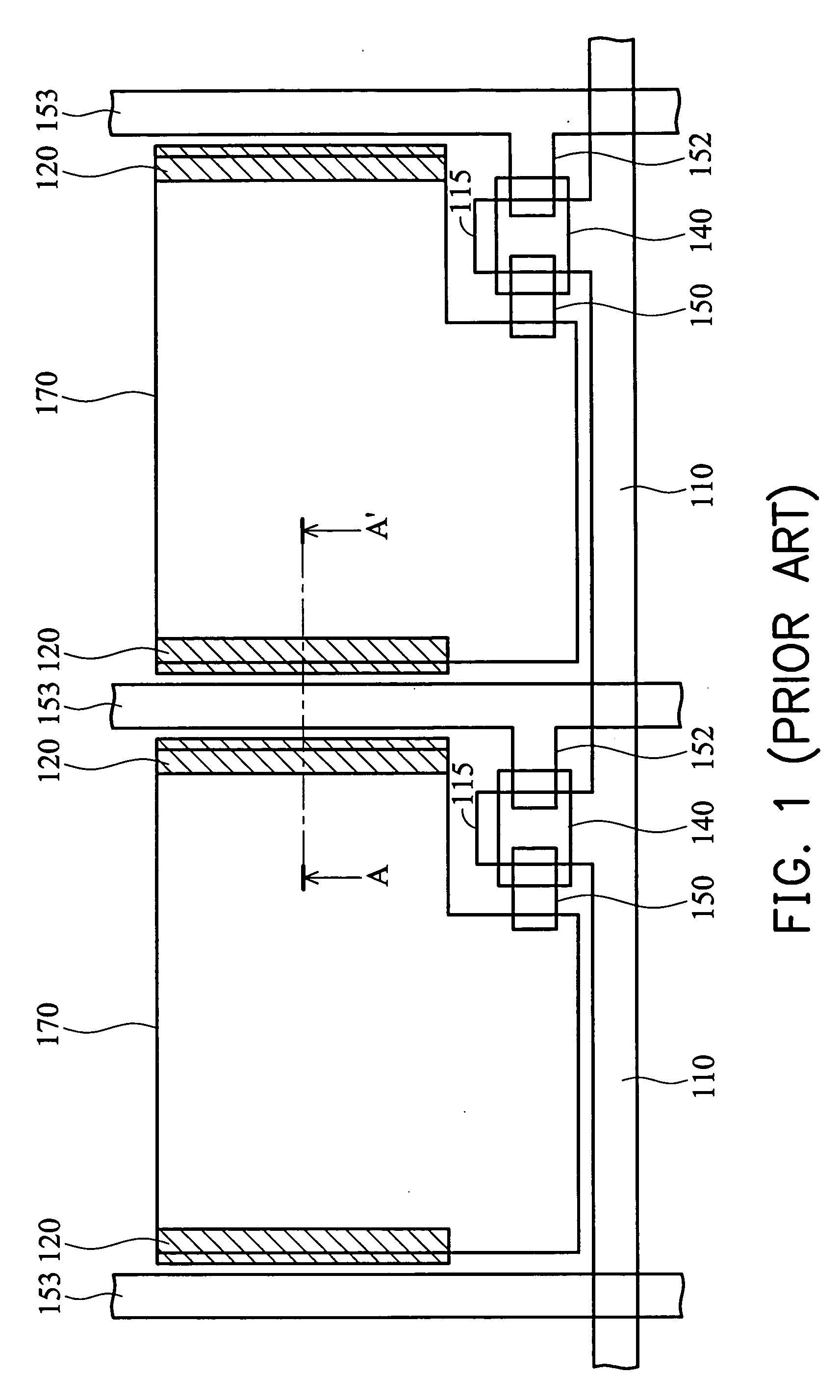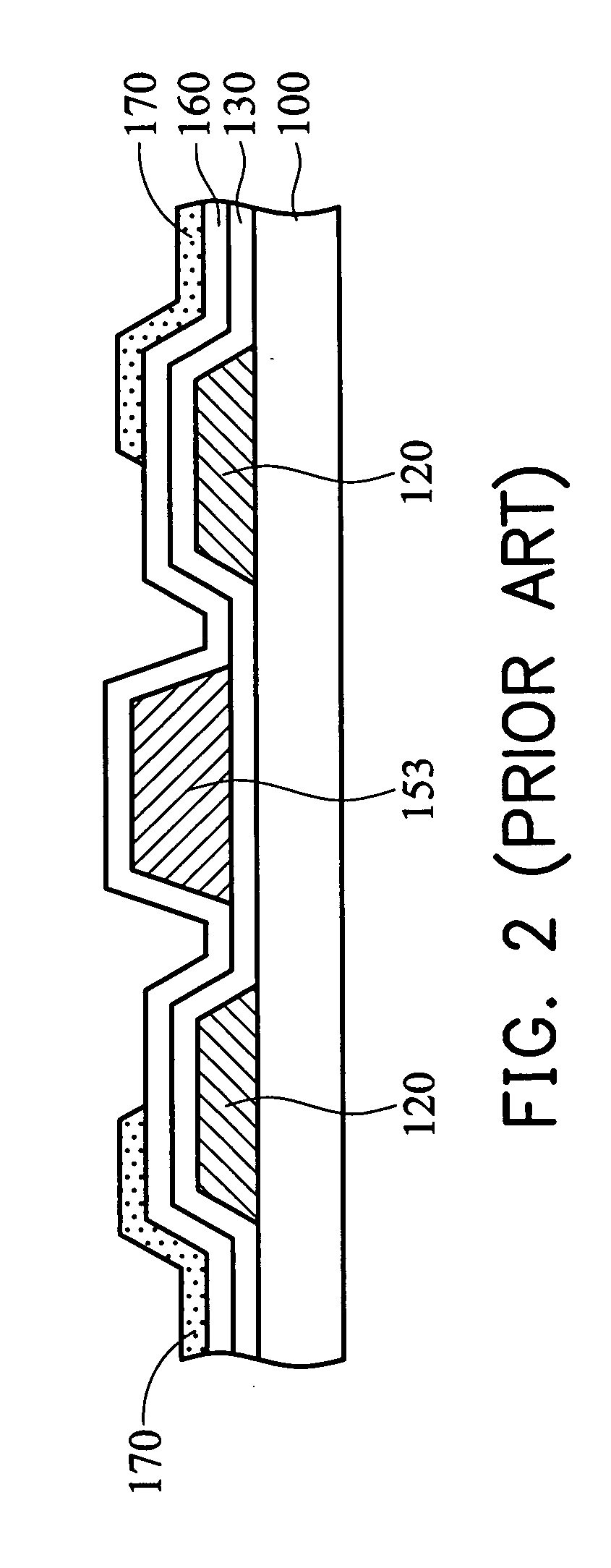Method of stabilizing parasitic capacitance in an LCD device
a parasitic capacitance and liquid crystal display technology, applied in non-linear optics, instruments, optics, etc., can solve the problems of serious affecting display quality, method is still subject to misalignment problems, and conventional lcd process has several problems, so as to achieve stable parasitic capacitance in lcds and improve display quality
- Summary
- Abstract
- Description
- Claims
- Application Information
AI Technical Summary
Benefits of technology
Problems solved by technology
Method used
Image
Examples
Embodiment Construction
[0021] Reference will now be made in detail to the present preferred embodiments of the invention, examples of which are illustrated in the accompanying drawings.
[0022]FIG. 3 is a plan view of an LCD device of the present invention. FIG. 4 is a sectional view taken along line B-B′ of FIG. 3. In order to simplify the illustration, FIG. 3 shows a substrate in two adjacent pixel regions. That is, there may be a large number of pixel regions.
[0023] In FIGS. 3 and 4, a first substrate 300 serving as a lower substrate is provided. The first substrate 300 can be a heat-resistant glass substrate. By performing a photolithography (or patterning) procedure using a first photomask (or reticle), a plurality of transversely expanding gate lines 310 are formed on the first substrate 300. The gate line 310 has a protruding portion 315 serving as a gate 315. Then, a first insulating layer 320 is formed over the first substrate 300 and the gate line 310. The first insulating layer 320 can be a sil...
PUM
 Login to View More
Login to View More Abstract
Description
Claims
Application Information
 Login to View More
Login to View More - R&D
- Intellectual Property
- Life Sciences
- Materials
- Tech Scout
- Unparalleled Data Quality
- Higher Quality Content
- 60% Fewer Hallucinations
Browse by: Latest US Patents, China's latest patents, Technical Efficacy Thesaurus, Application Domain, Technology Topic, Popular Technical Reports.
© 2025 PatSnap. All rights reserved.Legal|Privacy policy|Modern Slavery Act Transparency Statement|Sitemap|About US| Contact US: help@patsnap.com



